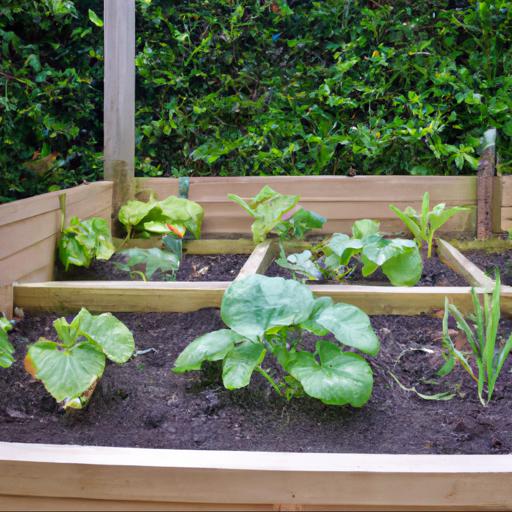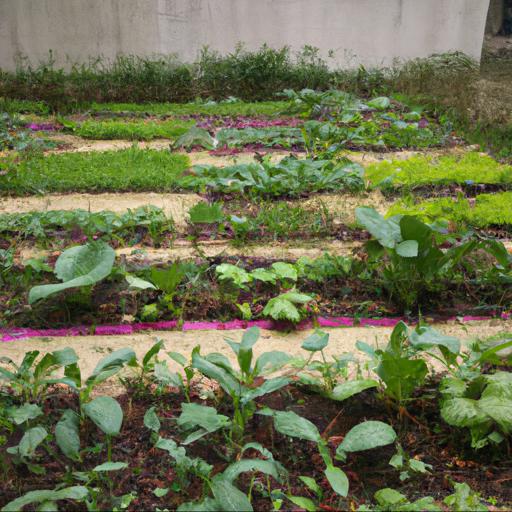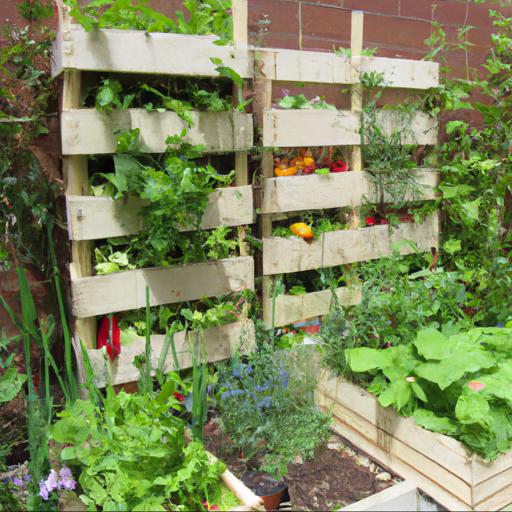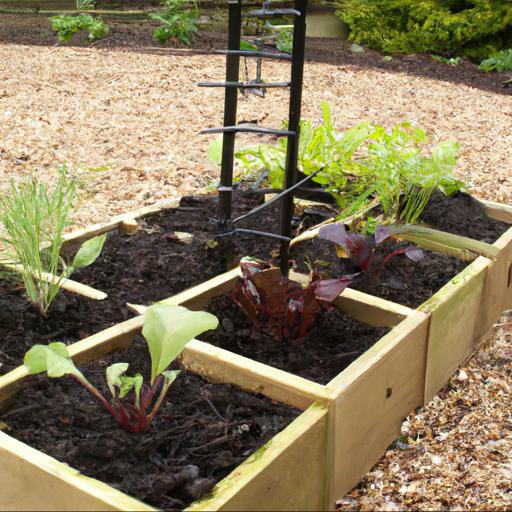Are you looking for ways to maximize your garden space and grow more vegetables? Growing space-saving veg crops can be a great way to get the most out of your garden. Space-saving veg crops are specially designed to take up less room in your garden, while still providing you with a plentiful harvest.
In this blog, we’ll discuss the benefits of growing space-saving veg crops and provide some tips on how to get the most out of them. We’ll also share some of the best space-saving veg crops to grow in your garden.
So, if you’re looking for ways to maximize your garden space and get the most out of your harvest, read on!
Benefits of growing space-saving veg crops

In the world of urban gardening, finding a way to use minimal space for maximum effect is key. Space-saving veg crops are perfect for those looking to make the most of a small balcony, patio, or conservatory. Not only do these cropping systems allow you to cultivate plants in much smaller spaces than traditional systems, they also have several additional benefits.
The first benefit of space-saving veg crops is that they require less maintenance. Instead of worrying about weeding, pruning and thinning, you can simply fill your planters with soil and sow your seeds.
These systems are often equipped with adjustable plant rings, allowing each plant the exact amount of space needed to produce healthy fruit, making it easier to manage your veg patch. The second benefit of growing space-saving veg crops is that it can reduce wastage. As these systems are designed to make use of a small space, it means you can focus your attention on only a few specimens, making it easier to harvest each variety as it reaches maturity.
Space-saving veg crops also help to create a more consistent growing environment throughout the year – it’s not just the summer months that you can enjoy the juicy fruits and crunchy vegetables of your labour. Finally, growing space-saving veg crops can promote intensive crop rotation.
As fewer plants are grown in each patch, allowing mixed veg varieties such as lettuce and tomatoes to share the same space, you can plan your crop rotation more effectively. This in turn can help to maximise nutrient use, reduce pest infestations and prevent the build up of diseases like blight.
Space-saving veg crops may be the perfect solution if you’re looking to make the most of the space you have, while also reaping all the benefits of traditional veg-growing. From fewer weeds to higher yields, these systems provide the perfect way to enjoy a productive patch of vegetables in the tiniest of spaces.
Types of space-saving veg crops

For those of us with limited outdoor space, it can be a challenge to try to make the most of limited space and yet grow a bounty of vegetables. But contrary to what one might think, it is entirely possible to cultivate a wide variety of vegetables in a small space. Space-saving vegetable crops require just a little ingenuity, imagination and knowledge of the types of plants that will give a healthy harvest with minimal effort.
One of the most space-saving vegetables to grow is the pea. This popular vegetable only needs around 15 cm of soil depth, making them a perfect choice for shallow pots and window boxes.
When training up pea seedlings, they can be easily pinned up on trellises, providing ultimate space saving and gorgeous foliage in the process. Another great space-saving vegetable are the carrots. These may require a little extra width of the soil, but they don’t need much depth and can actually be grown in deeper three litre pots.
Carrots are also ideal for growing in troughs or cascading over edges such as raised beds. The other vegetables that can also be cultivated in small spaces, requiring little space and effort but yielding successful vegetables crops include lettuces, onions, Swiss chard, cauliflowers, potatoes, radishes and turnips.
These vegetables require a little more attention when it comes to watering, as they don’t tolerate drying out and need a bit more fertilizer. By considering the type, variety, and size of the vegetable, you can maximize the space available and create a successful vegetable harvest.
There are so many different space-saving vegetable plants to choose from, from peas and lettuces, to potatoes and onions. With proper space-saving cultivation strategies and creative solutions, even a small garden can yield a variety of delicious, healthy vegetables.
Tips for growing space-saving veg crops

Nowadays, urban spaces are becoming increasingly smaller – but this doesn’t mean you can’t enjoy a green space of your own. With some creative solutions and careful planning, you can turn even the smallest patio into a productive vegetable garden. Here are a few tips on how to grow space-saving veg crops.
When plotting a vegetable garden in a small space, vertical gardening can yield big results. Peas, beans, cucumbers and tomatoes can all be grown upwards, with trellising and wall planters you can stretch the plants’ roots in an upward direction rather than outward.
This saves space and also makes it easier to keep the garden tidy and weed-free. Furthermore, look to plants that harvest early and plant staggered crops such as peas so the same plot isn’t used up more than once over the season. When you are working with limited space, companion plants can be a fantastic solution.
Herbs and vegetables like go hand in hand in a garden – the fragrant lavender can help repel pests that attack its tomato neighbour and bee balm (or wild marjoram) will attract pollinators that help the beans and peas. Plant pairs like this not only save you space but also provide a number of mutual benefits.
Finally, invest in creative containers and planters that fit snugly into your small space. Utensil holders can be turned into colourful wall planters, old pallets can make mini vertical gardens, and window box planters can make for easy harvesting. By finding smart ways to fit plants into your space, even a small garden can become a productive vegetable plot.
With the right planning, everyone can enjoy a space-saving vegetable plot. By choosing wisely and adding a few extras, even the tiniest garden can be turned into a productive vegetable producing site.
With these tips, you’re on your way to growing a bounty of flavourful and fresh vegetables.
Bottom Line
Growing your own vegetables is a great way to save space and money. You can grow a variety of space-saving vegetables in small spaces, such as tomatoes, peppers, squash, beans, and cucumbers.
With proper care and attention, these plants will provide you with a bounty of fresh and healthy produce. With a little creativity and knowledge, you can create a thriving vegetable garden in even the smallest of spaces.
FAQ
What are the benefits of growing space-saving vegetable crops?
The benefits of growing space-saving vegetable crops include increased yields, reduced water usage, and improved pest control. Additionally, space-saving vegetable crops require less space for planting, which can help maximize the use of limited garden space.
What are some of the most popular space-saving vegetable crops?
Some of the most popular space-saving vegetable crops are tomatoes, peppers, cucumbers, squash, beans, and lettuce.
What are the best methods for growing space-saving vegetable crops?
The best methods for growing space-saving vegetable crops are container gardening, vertical gardening, and intercropping. Container gardening involves growing vegetables in pots, planters, or other containers. Vertical gardening involves growing vegetables in a vertical structure, such as a trellis or wall. Intercropping involves planting two or more crops in the same space, such as planting lettuce between rows of tomatoes.
What are the most important considerations when growing space-saving vegetable crops?
The most important considerations when growing space-saving vegetable crops are the type of crop, the amount of sunlight and water available, the soil type and fertility, and the amount of space available. Additionally, it is important to consider the climate and the amount of time available for maintenance and harvesting.
What are the most common mistakes made when growing space-saving vegetable crops?
The most common mistakes made when growing space-saving vegetable crops include overcrowding, not providing adequate drainage, not providing adequate light, not providing adequate nutrients, and not providing adequate air circulation.
What are the best tips for maximizing yields when growing space-saving vegetable crops?
The best tips for maximizing yields when growing space-saving vegetable crops are to choose varieties that are suitable for the space available, plant densely to maximize the number of plants per square foot, provide adequate water and nutrients, and practice crop rotation to reduce the risk of disease.

